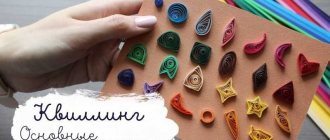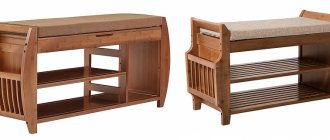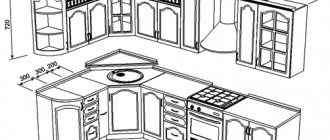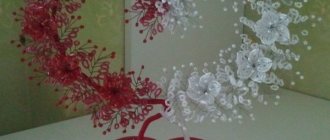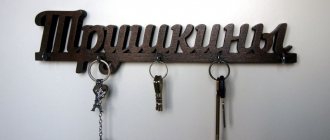Sharp cat claws often cause problems for the owner if his pet does not leave the apartment. Not everyone knows how to trim their claws on their own, especially since during this procedure the animal can be seriously injured. Therefore, the best way out of the situation is to purchase or make a scratching post for your cat with your own hands. Let's find out how to properly organize this process at home.
What is a scratching post for?
The simplest reason that a cat sharpens its claws is the need to hunt, despite the fact that pets no longer have to get food on their own.
No less interesting is the hypothesis about the relationship between cat health and the claw scratching procedure. There is an opinion that here we are talking about a kind of exercise for the whole body. The surface on which the cat rests acts as a training device. All muscles and bones of the skeleton take part in the process.
The next reason also concerns health. There are many nerve endings and blood vessels leading to the ends of the paws, pads and claws. By scratching, the cat massages sensitive areas, raises its tone and even gets pleasure. Often, a cat, stretching on a scratching post, purrs contentedly, as if such training gives him pleasure.
There is an opinion about the stress factor - a cat uses even a primitive scratch in order to get rid of negative “emotions”.
Veterinarians believe that with the help of a nail polisher, animals renew their claws and thus prevent the possible development of inflammatory processes in the paw pads.
This is interesting! A cat's skeleton consists of 240 bones, while a human's has 212.
Why do you need a cat scratcher?
A cat's claws grow throughout their cat's life, and to prevent their size from exceeding a comfortable norm, animals file them down by scratching something hard.
“Master, do you have a scratching post? That means you have extra furniture!”
Yes, cats will tear at something with their claws in any case, and it would be cruel to deprive them of this opportunity. If the claws are not kept in order, cracks and chips will not occur, and it will be easy to climb trees.
Long claws hinder the animal to the point of pain while walking, there is a real chance of getting a twisted claw and sprained ligaments!
If a pussy visits the street, then it needs protection, and without a manicure, going outside can lead to problems.
Nature has provided for the growth of claws and their grinding. So, we create suitable conditions for the cat!
Advice! Pay attention to which piece of furniture the cat is tearing up with particular zeal. A scratching post covered with the same material will distract your pet from dirty activities with an object not intended for damage.
What materials to make it from?
In order to make a scratching post for a cat yourself, you need to prepare drawings. Wood, fabric, rope and cardboard can be used as materials for a scratching post.
Wooden scratching post
You can make a wooden scratching post with your own hands in one of the following ways:
- Any snag or small cut of a trunk is an excellent sharpener for cat claws.
- A wooden beam wrapped with thick jute rope is a typical example of an industrial scratching post.
The only serious requirement is matching the diameter or cross-section. The cat should rest its two front paws comfortably on the surface.
DIY scratching post made of cardboard
The cardboard scratching post should be horizontal. The cat stands on it with all four paws, although traditionally it pays more attention to the two front ones. Sometimes they make combined versions in two planes - both under the feet and a small column.
You can make a scratching post with your own hands from corrugated cardboard, which was left over after purchasing large household appliances (refrigerator, stove) or electronics (TVs).
The easiest way to quickly make a scratching post for a kitten is as follows:
- Cut the corrugated cardboard into equal strips 5-6 cm wide.
- Glue these pieces together into a large thick panel (for example, 50x50 cm) and press with a press for a better connection.
After the composition has dried, you can additionally cover the sides with remaining cardboard to give the entire product an aesthetically finished look.
Important! A roller made of thick fabric, wrapping paper rolled into a tight drum - the cat will scratch its claws on everything that the owner offers it. But the lifespan of such home-made structures is very short; they literally turn into scraps before our eyes.
How to make a scratching post with your own hands
There are many ways to make a scratching post with your own hands from scrap materials:
- A piece of an ordinary rug or runner is nailed to a wooden base and a fully functional prop is obtained. Moreover, you can put it under your feet and attach it to the wall so that your pet can take a comfortable vertical stance.
- Corrugated cardboard - a scratching post made from it can also be made in the form of one sheet, which is glued to the base.
When calculating the scheme, you need to take into account the size of the cat's body. For example, the height of a scratching post for a Maine Coon should be at least 1 m. For other smaller representatives of the cat family, a “modest” 60 cm is enough.
Rope post
The standard height of a scratching post is usually 50-60 cm. When making such an “accessory” for a cat, you need to take into account important factors:
- You will need a base stand to which the main element is attached.
- A platform-bed is usually provided on top - cats love to watch what is happening from a height.
- The upper part can be used to place hanging soft toys.
- You can additionally attach a rope to the post - cats love ropes and enjoy playing with them.
In the process of making a claw post, special attention should be paid to the base (stand).
Manufacturing recommendations:
- The platform should be made of a piece of thick plywood or chipboard cuttings.
- Its size depends on the height of the structure and the weight of the cat. We must not forget that the animal will most likely jump from above, pushing off with four paws. This will give such a load that the unstable structure on a small stand will simply tip over. Low scratching posts (50-60 cm) must be provided with a base of 50x50 cm. But for a longer post you will need a platform measuring 75x75 cm.
- You need to prepare all the necessary materials in advance: a post, fabric for gluing the base and top platform, a sufficient number of meters of thick rope, self-tapping screws and a screwdriver, insulating tape, metal corners (6-8 pieces).
- If you plan to make a scratching post with a house, it is best to provide additional fastening to the wall.
- As a material for the post, you can use a plastic pipe or a rectangular wooden beam.
Step-by-step process for making a scratching post with your own hands:
- Screw 3-4 metal corners on both sides of the post. Later they will serve to attach the scratching post to the base and secure the upper platform.
- Wrap the end of the rope with electrical tape and screw it to the pipe or beam with a self-tapping screw through this seal.
- Wrap the rope tightly around the entire length of the post, leaving no free space.
- Secure the top edge of the cord with electrical tape.
- Place the scratching post on the base and secure it with screws through the corners.
Next, you need to cut out the fabric and paste the horizontal surfaces - the base and shelves. All that remains is to hang the soft toy on a long rope (if such an attribute was planned).
Scratching post-mat
Some cats love to sharpen their claws on horizontal surfaces. For example, an animal does not pay attention to the corners of furniture, but tears the upholstery on the sofa. If your pet has just such inclinations, then you can quickly make a simple scratching post for your cat with your own hands.
To work you will need:
- a piece of plywood or chipboard 500x500 mm;
- a piece of old carpet, rug or any dense fabric;
- glue.
You also need to take a drill, a large needle, strong thread or fishing line.
A horizontal cat scratcher can be made as follows:
- Cut out the wooden base.
- A fabric covering is prepared to suit its size.
- Thin holes are drilled along the perimeter of the plywood at a distance of 4-5 cm.
- The surface of the base is lubricated with a suitable glue and connected to the fabric.
- The structure is placed under a press until the glue dries.
Through pre-prepared holes, both elements are sewn along the edge with a strong thread or fishing line.
You can attach additional cat accessories to the scratcher - this could be a hanging soft ball or a mouse.
Corner scratching post
To make a corner scratching post, soft elements (scraps of thick fabric), corrugated cardboard, and old bath mats are suitable. Work progress:
- Take 2 identical sheets of any plywood or fiberboard and glue them on one side with a regular cloth or bandage. The result will be something like a folding book.
- Holes are drilled along the perimeter of these two elements at a distance of 4-5 cm from each other.
- The surface of the scratching post is covered with cloth.
- Place the workpiece under the press and wait for the glue to dry completely.
- The final stage is to sew both layers of the scratching post through pre-prepared holes.
In order to secure a corner scratching post, sometimes it is enough to place it in a corner and press the edges with furniture. Some owners use double-sided tape for fixation, with which you can firmly attach the structure to the wall.
Scratching post house
The most difficult option of all presented. You can make a cat scratching post with a house with your own hands using one of the following methods:
- Develop two separate elements (house and stand), and then connect them together. A very profitable option, since in the future you can add a play space to this design in the form of a ladder, passage or labyrinth.
- Another simpler method is to design a cat scratching post and a house together as a single whole.
The second option has an advantage. A horizontal scratching post can easily be placed on a flat roof, and a high wall can be adapted for a vertical scratcher.
It’s easy to make a house with a scratching post for a cat:
- The walls are cut out according to the intended dimensions.
- To make the structure harmonious, the interior space can be divided into two floors - the pet will only be happy with the extra “room”.
- It is necessary to provide at least two exits in different directions - it is recommended to design one of them on the second tier.
- All structural elements are connected with metal corners or using wooden slats.
- The roof must be removable - through it, the house is subsequently cleaned and disinfected.
- The inner walls must be covered with any thick fabric, and the outer walls must be covered with material suitable for scratching posts (for example, carpet trimmings).
Important! If you attach a stick with a hanging soft toy above the entrance, then the overall project will only benefit, and the cat will receive additional entertainment.
Carpet scratch board
You can quickly and easily make your own carpet scratching post. To do this you will need:
- Wooden board or piece of chipboard.
- A piece of carpet or old carpet.
- Nails.
- Hammer.
The size of the wooden canvas is selected based on the size of the cat, because the structure made can be used as a bed and as a claw sharpener.
How to make a nail clipper:
- Place the rug with the wrong side up.
- Stepping back from the edge of the carpet, place the board.
- Wrap part of the carpet over the board and secure with nails along the entire edge.
- Carry out the same actions with the second part of the carpet. If the two layers overlap, they can be cut off with a knife or left as this will create an extra springy feel for the cat.
For the cat to start using the scratching post, just turn it over to the other side. If a fairly heavy tree is chosen for the scratcher, then it may not be secured, and the cat will still not turn it over.
Mistakes when making a cat scratching post
The most common mistakes when making a scratching post yourself can be associated with the wrong choice of materials and failure to follow step-by-step instructions:
- To create a vertical scratching post, use a rope that is too thin and weak - the cat will quickly break it.
- Horizontal rugs are covered with low-quality fabric.
- Instability of the posts - if the structure falls and frightens the cat, it will no longer come to the scratching post.
- Open elements of metal fasteners, screw heads or other similar parts can injure the cat.
- The use of synthetic fabrics and adhesives can cause poisoning.
DIY scratching post repair
Most often, owners have to deal with the restoration of fabric and rope structural elements:
- It is better to completely remove the weak and thin cord from the vertical posts and replace it with jute rope.
- Damaged fabric upholstery is replaced with new one.
- Scratching posts made of corrugated cardboard are not worth repairing - they are simply thrown away and the next one is made.
- With wooden houses you have to tinker - you need to disassemble the entire structure, correct defects and fasten it back together. But if the project was originally completed with high quality, then no significant troubles can happen to it.
Claw houses cause trouble only in one case - if they are assembled with self-tapping screws, without corners or slats. Large cats weaken the structure and it quickly fails.
Cat claw sharpener - which one to take on the road
Let’s immediately make a reservation that there are no special travel nail clippers: if the journey is long, for the comfort of the pet, take a flat model with you - it does not take up much space.
If you travel comfortably, you can take a small model with you
The toy will distract your pet from the long journey. This model is made similarly to the design with a column, but without a sunbed. The basis could be anything. If you have a road post, it will be an excellent base.
It is better to take a rope that is not very fleecy for making. If the product gets damaged along the way, it will be difficult to get a new one. You can not wrap the post with rope, but use a furniture stapler to wrap it in carpet.
